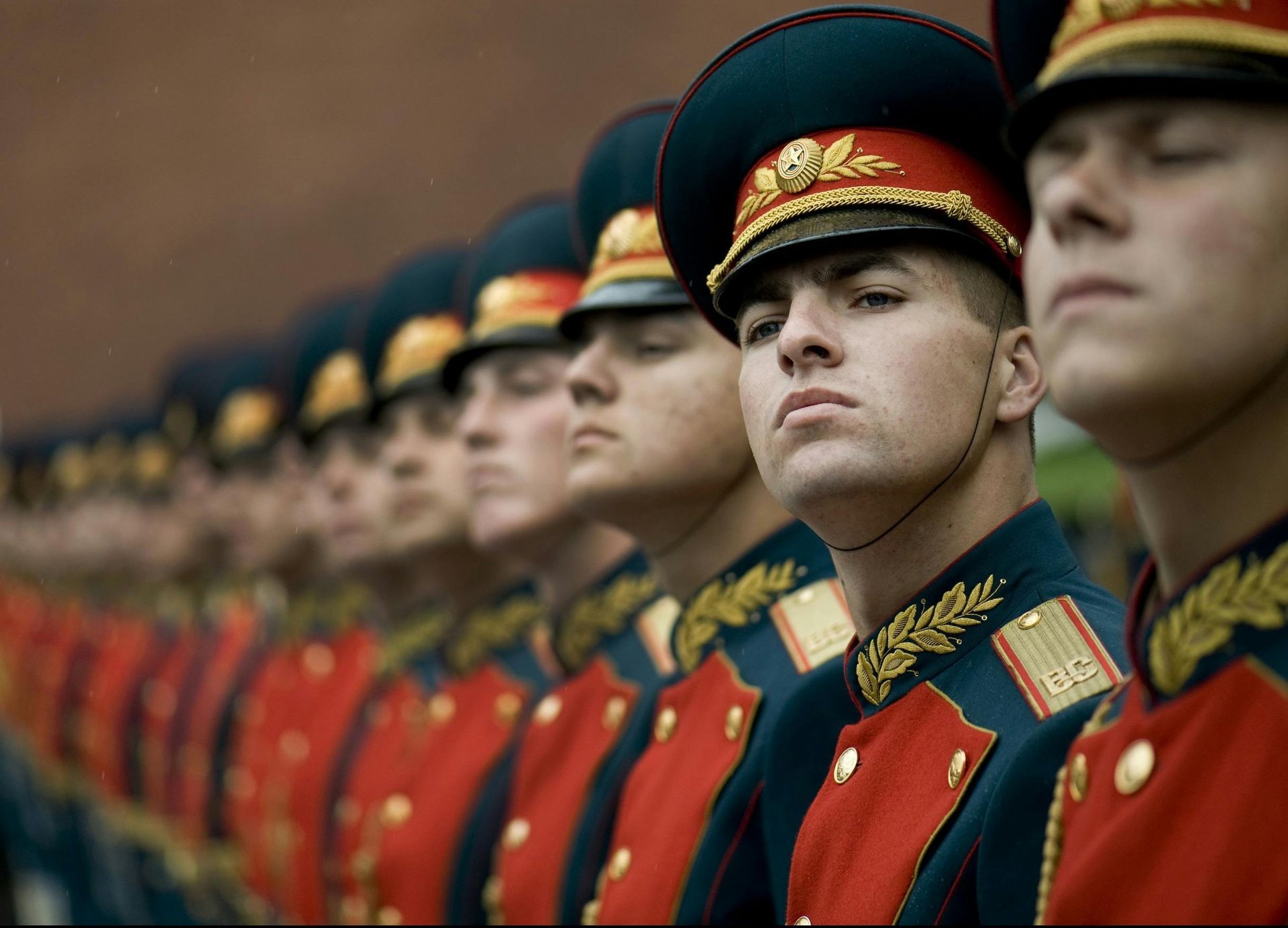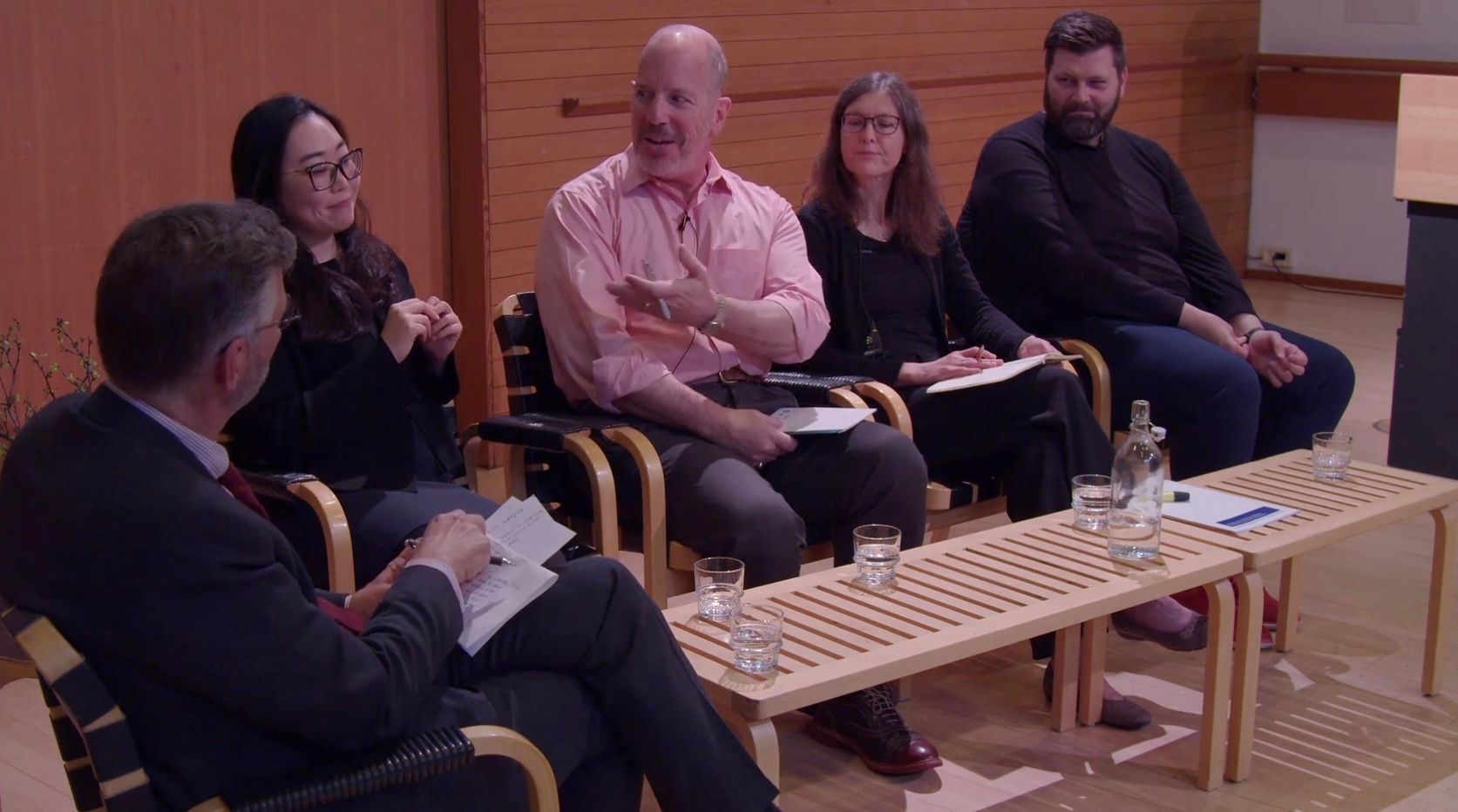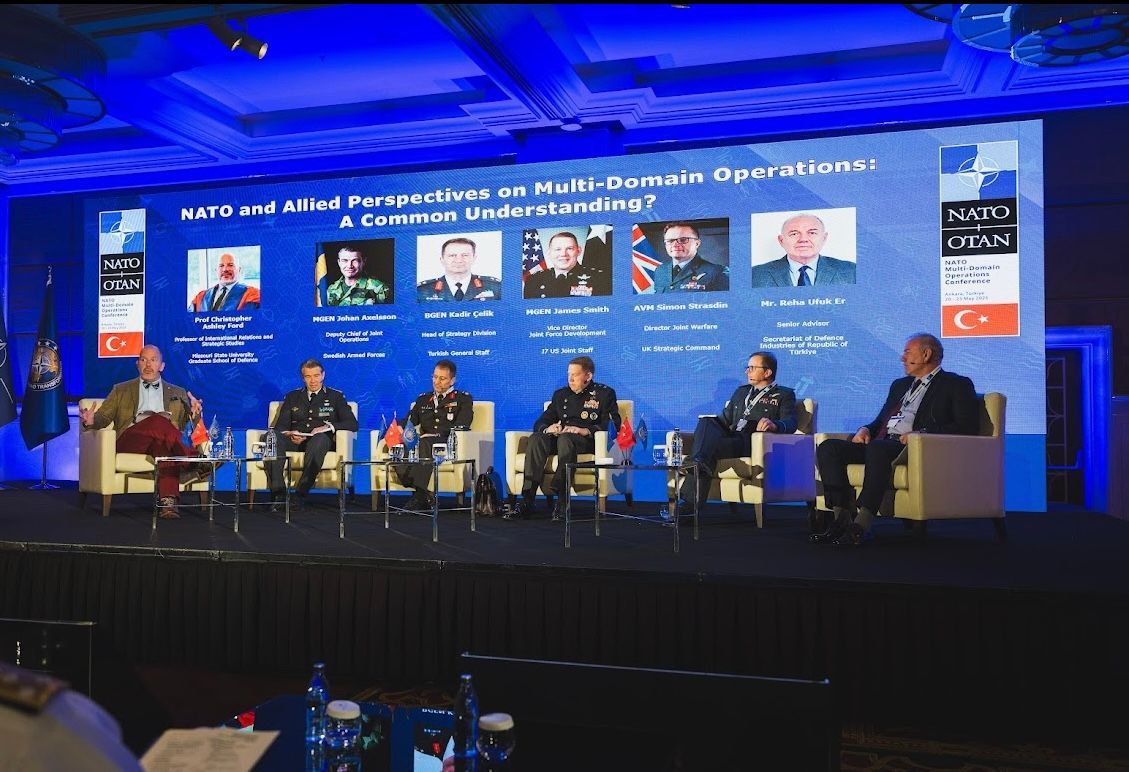Thinking about a Poly-Nuclear Middle East
Note:
This is the text upon which Dr. Ford based his remarks at panel event on “ When Iran gets the Bomb: What Will It Do? What Will Others Do? What Will Be the Costs ?” held at Hudson Institute on June 21, 2012. Other participants included Husain Haqqani, Ali Alfoneh, David Wurmser, Samantha Ravich, Bruno Tertrais, and Lee Smith. Lewis Libby and Hillel Fradkin moderated the discussion.
Good morning, and thanks to Hillel, Scooter, and the gang for setting up this conference. I wish the topic weren’t so timely – but given that it is, I’m glad we have the chance to discuss it.
One can presumably debate what exactly is most likely to happen in the event that Iran succeeds in acquiring nuclear weaponry, but it is certainly widely believed – and not at all implausibly, I think – that Iran’s nuclear weapons program could catalyze a “cascade” of proliferation in the region. For purposes of our discussion today, I’d like to ask you to assume this arguendo , as we lawyers sometimes say, so that we can speculate a bit about what it would actually be like in a Middle East that contains not just one or two, but potentially several nuclear-armed states. This is surely one important scenario in the “landscape” of alternative futures that we really do face, so its implications and its dynamics are worth exploring.
The easy thing to say about the prospect of a poly-nuclear Middle East – which we can call a “PNME” if you like acronyms – is that it would likely be more prone to conflict than today’s Middle East, and that the consequences of such conflicts could be very high. The basic problem, of course, is that the more players there are in a deterrence relationship, the more unstable it is likely to be.
One could perhaps express this insight in very fancy ways. The physicist Alvin Saperstein, for instance, once wrote an article analyzing the stability of two-player versus three-player strategic balances by trying to assess the Lyapunov coefficient of such relationships. (This is a term named after the late 19th-Century Russian mathematician Aleksandr Lyapunov, who did pioneering work on the stability of nonlinear systems.) Though the mathematical details are quite beyond me, I understand that this coefficient measures “the rate at which initially neighboring configurations drift apart as the model system evolves” – which is a way of describing instability and unpredictability. Saperstein’s work, at any rate, suggests that the coefficient gets higher the more players there are in a strategic system, which is a powerful predictor of “chaos or instability.”
But you don’t need to be a mathematician, and you don’t need Complexity Theory, to understand the point. It’s common sense. Right here in Washington, in fact, Henry Sokolski of the Nonproliferation Policy Education Center built a very effective PowerPoint slide some years ago that shows the proliferation of dyadic nuclear relationships – that is, relationships in which nuclear deterrence has the potential to come into play, and thus in which deterrence might perchance fail – increasing rapidly as the number of participants in a system increases. In 1961, it posits, there were only six possible bilateral nuclear relationships in the world, because there were only four nuclear possessors. Adding only three players to the mix in order to describe today’s world, however, brings the number of potential deterrence relationships up to 21. And in a future (hypothetical) proliferated world of 17 players, there would be 136 relationships – which is to say, 136 chances for things to break down.
The point is clear. The more players there are, the more chances there will be for the system to break down, through accident, error, miscalculation, miscommunication, or some other pathology. Indeed, even without accidents, more players is clearly trouble, for the more axes there are along which each player needs to attempt the subjective and target-dependent calculation of “what deters” someone else, the harder it will be to find and maintain a single approach that will work to keep the peace. (After all, you can have only one force posture at a time. That may be manageable if you’re only really concerned about a single significant “dance partner,” but it surely gets trickier when poly-nuclearity, as it were, forces you to look in multiple directions simultaneously.) With lots of relationships to handle at the same time, you either have to pick a posture that you think will work best vis-à-vis the highest priority deterrence “target,” or pick a kind of lowest-common-denominator approach that you know isn’t actually well-tailored for any particular target but which might perhaps let you squeak by in facing all of them. Don’t expect fine calibration here, in other words, even if it were clear what deters. And do expect that poly-nuclearity will create incentives to “aim high” in order to hedge against the risk of having an insufficient deterrent in any particular case.
I see no reason to think that the Middle East, of all places, will be any more resistant to deterrent collapse as proliferation progresses than is the world more generally. A PNME seems likely to be less stable – and more dangerous – than the current Middle East. It would surely offer more opportunities for disaster, even while the very presence of more nuclear weapons, in more hands, would ensure that the cost of a breakdown could be terrible indeed.
If anything, this calculus may understate the problem, for nuclear planners in a PNME – or a proliferated world, for that matter – would not have to worry only about merely bilateral challenges. How should force planners approach managing not just bilateral relationships but also what Bismarck called “ le cauchemar des coalitions ”: the nightmare of coalitions? (This is an eventuality about which we ourselves did not worry too much during the Cold War, because the two superpowers held an overwhelming numerical majority of the nuclear weapons in existence. With more players possessing more equal arsenals, however, the possibility of adversary coalitions could become nightmarish indeed.) With nuclear players staring at each other across multiple axes of difference and competition – which, in the Middle East, means ethno-national rivalries between Persians, Arabs, Turks, and Jews, religious divisions between Sunnis and Shi’ites (and Jews), and tensions between democracy and assorted flavors of republican, monarchical, or clerical dictatorship – how does one structure nuclear forces in anticipation of possibility of facing opportunistic nuclear alliances in a poly-nuclear environment? What would it mean to pursue even a “minimal” deterrence in such a system, and could this be distinguished from “maximalism” in the eyes of any single dyadic opponent? Even if minimalism were the objective, moreover, this structure would create worrisome incentives for numerical arms racing and dramatic crisis instability. From a game-theoretical perspective, this sounds like quite an unstable and dangerous environment.
But there’s another source of unpredictability, too, for as we speculate about how nuclear-armed states would behave in a PNME, we need to avoid the analytical trap of mirror-imaging: we cannot presume that all weapon-holders in such an environment will think about, or handle, nuclear weaponry in the same ways that we do – or that they would necessarily be able to follow longstanding nuclear weapon state models even if they wished to. Some of them presumably would not, and any differences that emerge could have important implications for how well deterrence does, or does not, “work.”
Not all of these differences would necessarily be destabilizing in themselves, of course. But mismatches between conceptions about the utility – and actual choices made in the handling – of nuclear weapons could be problematic even so, since in a PNME different players could easily adopt different nuclear “answers” all at the same time, particularly if disparities exist in such things as the sophistication and reliability of their command-and-control architectures, or their ability to make “deterrent” forces survivable. Not all such choices are likely to work well with each other.
To give an example, it might be argued that a force of warheads detached from delivery systems and stored away in well-guarded bunkers – the Pakistani model, if you will – is a good force posture for a Middle Eastern state concerned not only with deterrence but also with domestic instability, intra-institutional distrust, and command-and-control fragility that might make a more “deployed” approach too risky except in time of grave crisis. The degree to which this choice might be stabilizing or destabilizing, however, would depend upon a number of variables, not least the degree to which near-real-time reconnaissance and rapid weapon delivery becomes available to its potential adversaries – factors which will affect the degree to which such a deployment strategy would present an adversary with preemption incentives in a crisis, or even in peacetime.
The adoption of a more forward-leaning deployment strategy, however – which might prove attractive for a state that feared a potential adversary’s ability quickly to use nuclear weapons or even precision-guided conventional ones – would also present considerable risks, though different ones, and would vary in its feasibility and its impact upon stability depending upon such factors as command-and-control integrity and delivery system survivability in the field. As multiple players each adopted a force posture that represented a different compromise between the sorts of tensions and conflicting incentives they would face, the odds would presumably increase that the resulting “balance” will end up being no meaningful “balance” at all – especially if the system were stressed in some way by a political or military crisis in or between one or more of the participants.
And it might well be stressed in this way, for I’ve so far just been speculating in fairly abstract ways about deterrence theory – and this is the Middle East we’re talking about. Overlay this new poly-nuclear game-theoretical deterrence instability on the basic political instability that the region starts out with, and this is surely a combustible mix.
Recall, if you will, the last handful of years in the Middle East. Even since the last Arab-Israeli dust-ups in Lebanon and then in Gaza, there has been a suppressed popular uprising in Iran and another one in Bahrain. Popular uprisings overthrew governments in Tunisia and Egypt, with things in Egypt still remaining perilously unsettled even as we speak, while security problems grow on the previously fairly peaceful Sinai frontier. Turkey imperiled its relationship with Israel by encouraging provocative blockade-running to Gaza. Libya dissolved into civil war that drew in a number of outside powers before loyalist government forces were finally defeated, while Syria remains enmeshed in its own infamous civil war to this day. Lebanon remains essentially internally partitioned, with a Hezbollah proto-state in the south geared up for another war with Israel, either on its own terms or as Iran’s proxy if conflict erupts a thousand miles away in the Persian Gulf. A war did wind down in Iraq, but it hasn’t precisely been replaced by peace; governmental authority there is sharply divided along both ethnic and racial lines, periodic bombings continue, and the political environment is a fragile one on the best of days.
Clearly, the Middle East is in a terribly unsettled state today. How confident are we that this morass of unpredictable internal instabilities will have resolved itself by the time a handful of these wobbly players acquire nuclear weaponry? And if it has not, what would be the impact of such rumblings and eruptions upon nuclear stability in the region? With the partial exceptions of Cultural Revolution China and the emerging specter of a possible internal breakdown in Pakistan, the world has never seen major internal violence and instability in a nuclear-armed state – and certainly not within multiple nuclear-armed players who face each other in a deterrent standoff. This sounds very much like a story, as the saying goes, that won’t end well.
I want to leave time for discussion, but let me just highlight one further issue before I conclude. It seems commonly to be assumed that the acquisition of nuclear weapons will have the effect of “immunizing” a proliferator regime from extra-regional intervention and intra-regional invasion alike. To which my response is: “Well, maybe.” If local conditions are sufficiently volatile, however – especially in the event of internal instability – this might not necessarily follow. It doesn’t take too much effort to concoct scenarios in which the presence of nuclear weapons might make outside intervention more likely, rather than less.
Imagine, for instance, that the United States and the United Kingdom had not succeeded in our remarkable cooperative and trilateral operation in 2003-04 to rid Libya of its WMD programs, and Muammar Qaddafi had instead gone on to develop a handful of nuclear weapons before his country collapsed into civil war in 2011. Would such weapons have protected Qaddafi against outside intervention? Or would they at some point, as things disintegrated there, have made such (or a greater degree of) intervention more desperately necessary , in order to prevent their use or keep such devices from disappearing into some shadowy world of non-state terrorists? Similarly, would a nuclear-armed Saudi Arabia teetering on the edge of internal collapse to Sunni fanatics really be “protected” against outsiders? Or might such circumstances actually incite a preemptive prophylactic attack – with conventional weapons if the capability existed, or conceivably even with nuclear ones, perhaps from a nuclear-armed neighbor – designed to destroy its nuclear assets and help preclude the worse catastrophes that might follow as the country’s weapons storage bunkers were overrun? One shouldn’t take it entirely for granted, I think, that the “intervention” issue is “over” the moment that nuclear weapons arrive on the scene. Nor is there any assurance that weapons-holders’ cost-benefit calculations would be viewed the same way at the point of a regime’s complete collapse: deterrence, after all, is very likely to fail if one party stops caring about retaliation.
Anyway, none of us on this panel can really predict with any certainty what a poly-nuclear Middle East will look like: we are analysts, not prophets. But I would like to point out that it seems very likely that a PNME would be a dangerous and unstable place indeed. There is much room for debate about what policy choices are wisest today in light of the possibility of such dangers tomorrow. To the extent, however, that our willingness to accept risks and bear burdens now must necessarily be conditioned by the magnitude and likelihood of the dangers we think will face us in the future, we need to bear in mind the potential awfulness of a PNME as we consider how far to try to go, now, to prevent it from materializing.
Thank you. I look forward to our discussions.
-- Christopher Ford








